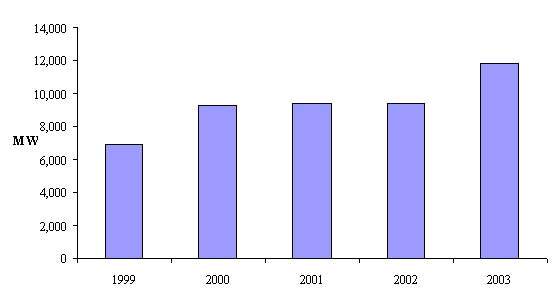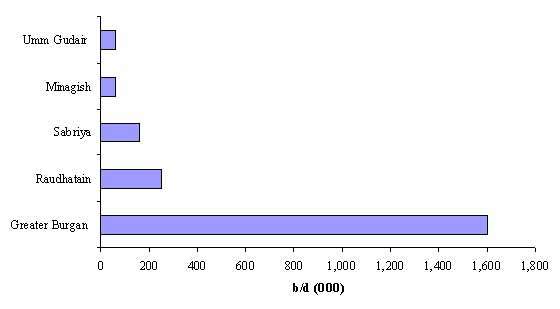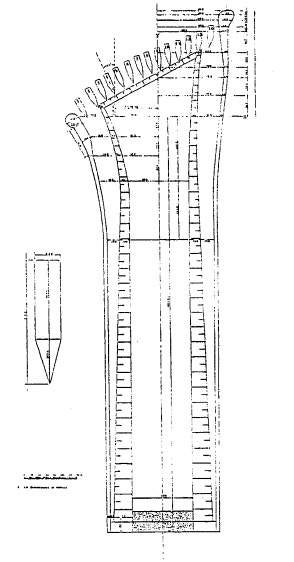Stage one of the Subiya oil-fired power plant in Kuwait was completed in 2000. Eight 300MW boilers and turbines are now producing 2,400MW and up to 12MGD of drinking water at the $2.2bn Subiya I plant. The 2,000MW Subiya II plant is gas fired and should increase drinking water production to 96MGD.
Kuwait’s Ministry of Electricity and Water (MEW) embarked on the 2,400MW Subiya project in the north of the country in 1989. The station was planned to provide support for existing power stations under emergency situations and to ensure the comfortable coverage of potential power demand.
The contract was disrupted by the Iraqi invasion of Kuwait in 1990.
Subsequently, the project was delayed by higher priority projects and then because of the decline in population and a drop in power consumption. Contract agreements were finally renewed in 1994.
Subiya I has a total full-load cooling water demand of 100m³ per second and this was increased to 148m³ per second by Subiya II.
The cooling supply is from the seawater at Khor Al-Subiya and wastewater is discharged into Kuwait Bay.
Mitsubishi installs eight 300MW boilers
According to the reopened contract, Mitsubishi Heavy Industries resumed work to expand the Subiya I oil-fired power plant in 1994.
Mitsubishi engaged in the construction work on a full turnkey basis, including the assembly and installation of eight 300MW boilers and turbines.
The first unit was hydraulically tested in December 1997 and entered service in April 1998.
Early in 1998, the overall project was running behind schedule because of problems with overhead transmission lines. However, the project was completed near schedule by 2000.
The 2,400MW plant cost approximately $2.2bn. On completion, Subiya I brought the country a reserve margin possibly as high as 100% (10,000MW of capacity vs current peak loads of 4,500MW).
Subiya I contractors and suppliers
Mitsubishi Heavy Industries won the lead contract for Subiya I. It provided eight steam turbines and generators, boilers and other equipment and services in a contract worth $1.6bn. Coupled with its successes in Saudi Arabia, the order confirmed the group’s leading role in the Middle East.
Several groups won secondary Subiya I contracts. Hyundai Engineering & Construction and local partner United Gulf Construction Company were awarded a $450m civil works assignment and a related, smaller, T&D contract. The Korean group held off competition from local, the UK and French construction groups.
Merz and McLellan, a subsidiary of the engineering and construction company Parsons Brinckerhoff, provided consultancy services. Merz and McLellan was another company able to renegotiate a pre-invasion contract on this project.
Hongkong Electric’s Associated Technical Services arm also had a role as consultant engineers. CCC, a Greek construction firm, installed the fuel lines under a $100m contract. Indian group UB Engineering won an $18m contract for mechanical erection of the boilers. British Steel supplied steel components.
Subiya II contractors and suppliers
The contract for Subiya II was won by a consortium of General Electric and Hyundai Heavy Industries in 2006. However, the contract was cancelled and the project was re-tendered. The Kuwait MEW put out the tenders three times before awarding the final contract.
In September 2009, the ministry awarded a $2.6bn contract to a consortium of Al-Rashed Group for Projects Holding, GE and Hyundai Heavy Industries (HHI) to build the Subiya II power plant. The facility was developed in two phases. The first phase has a 1,300MW capacity and is expected to be operational in 2011. A further 700MW will be added in the second phase, which is scheduled to come online in June 2012. Site preparation works began in October 2009.
Engineering, procurement and construction (EPC) is being undertaken by HHI. Under the contract share of $1.3bn, GE will supply six Frame 9FA gas turbines, three steam turbines, nine generators and control protection systems. Once commercially operational in 2011, GE will also be responsible for operating and maintaining the plant for seven years.
Intake channel design
A study by the Kuwait Institute for Scientific Research helped the design of the intake channel to Subiya. It was designed to carry a maximum water supply of 148m³/s with a maximum velocity of 0.16m/s, to avoid resuspension of sediment and avoid scouring the channel banks.
The model study showed that the proposed bell-mouth intake channel should be modified by constructing 14 guide vanes at the entrance oriented at different angles. The spaces between the guide vanes are not equal, but depend on guide vanes’ location at the entrance section. That required modifications at the tip of the southern guiding dam.
Kuwaiti power market
Kuwait’s power consumption is projected to grow from 44TWh in 2010 to 66.4TWh by 2020. The projection was made after assuming an average annual growth of 4.2%.
The country’s power generating capacity is forecasted to increase from 10.9GW in 2010 to 14.4GW by 2015. Power production is estimated to touch 17GW by 2020.
A $1.25bn Shuaiba North power and desalination plant is scheduled for completion in 2011. It will have a capacity to produce 800MW of power and 270,000m³ of water.
Kuwait has some of the lowest power prices in the world and the government may reduce subsidies to try to cut its present electricity waste. The company is linking with electricity grids of other Gulf Co-operation Council countries to help handle peak demand periods.







